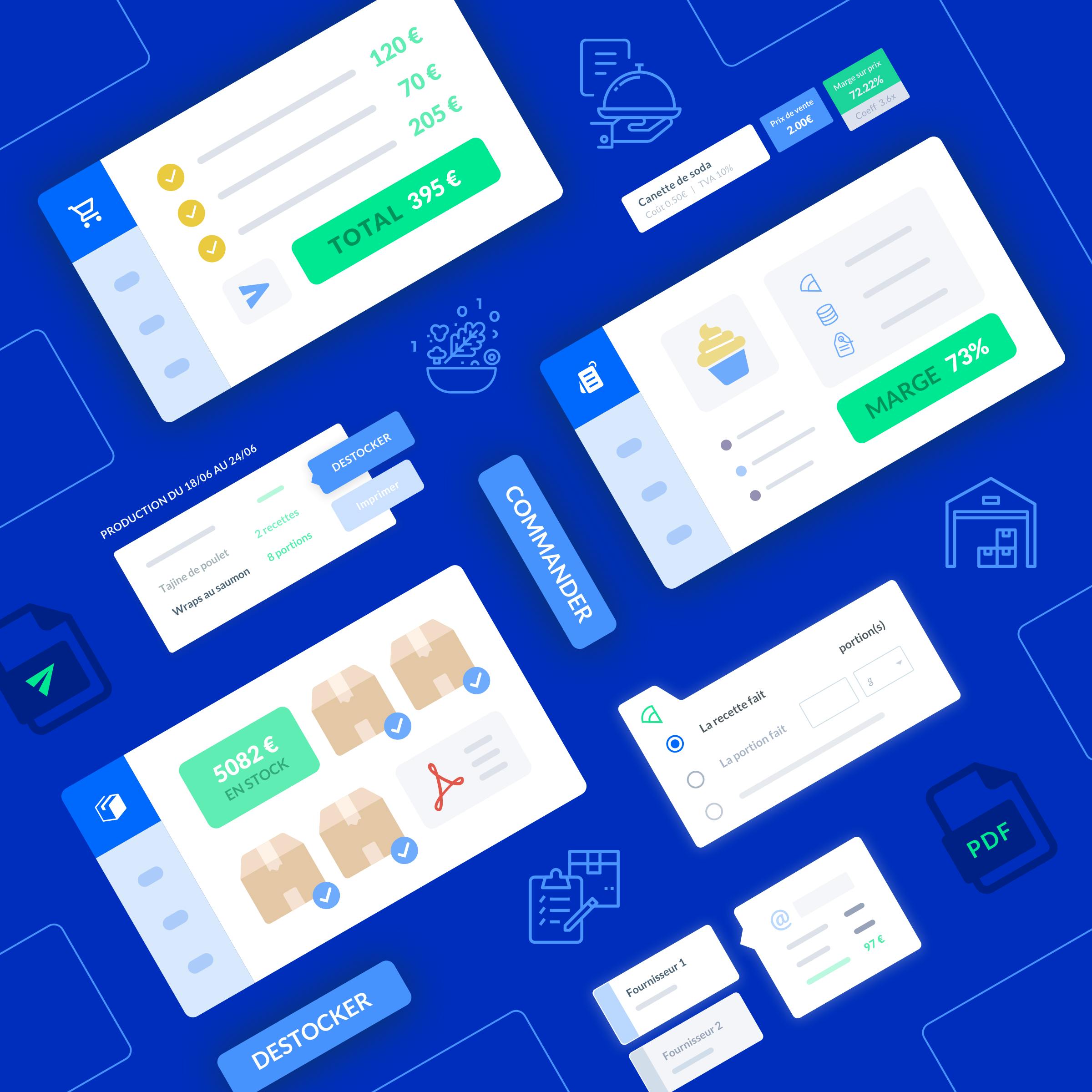ghost kitchen app
ghosts in the kitchen?No, we're not talking about spooky apparitions haunting your catering business.

The #1 management tool for dark kitchens
At the crossroad of caterers, central kitchens and restaurants, dark kitchens suffer from a lack of suitable software. Discover our tool, acclaimed by your peers for its simplicity and its focus on production.
ghosts in the kitchen? No, we're not talking about spooky apparitions haunting your catering business. Instead, we're referring to the concept of ghost kitchens and the innovative technology that supports them. In this article, we'll explore the world of ghost kitchen apps and how they are revolutionizing the food industry.
What is a Ghost Kitchen App?
A ghost kitchen app is a digital platform that connects food service providers with customers looking for delivery or takeout options. These apps act as intermediaries, facilitating online orders and coordinating the delivery process. They bring together various restaurants, virtual kitchens, and food delivery services under one digital roof.
Benefits of Using Ghost Kitchen Apps
- Expanded Reach: By partnering with a ghost kitchen app, restaurants can tap into a wider customer base beyond their physical location.
- Increased Efficiency: Ghost kitchen apps streamline the order management process, reducing errors and improving overall efficiency.
- Cost Savings: Operating a ghost kitchen can be more cost-effective than running a traditional brick-and-mortar restaurant, as it eliminates the need for a physical storefront.
- Flexibility: Virtual kitchens can experiment with different cuisines and concepts without the constraints of a physical space.
- Customer Insights: Ghost kitchen apps provide valuable data and analytics that help restaurants understand customer preferences and optimize their menus.
How Ghost Kitchen Apps Work
Ghost kitchen apps are designed to simplify the ordering and delivery process for both restaurants and customers. Let's take a closer look at the various steps involved:
1. Restaurant Sign-up
Restaurants interested in joining a ghost kitchen app need to sign up and create a profile. This typically involves providing basic information about the establishment, such as location, menu options, and pricing.
2. Menu Optimization
Once onboarded, restaurants work closely with the ghost kitchen app to optimize their menu for online ordering. This may involve tailoring the offerings, adjusting prices, and ensuring that the dishes can withstand the delivery process.
3. Order Placement
Customers browse the ghost kitchen app's interface, explore different restaurant options, and select their desired dishes. They can customize their orders, specify delivery preferences, and make secure payments directly through the app.
4. Order Processing
Once an order is placed, the ghost kitchen app notifies the respective restaurant. The restaurant then prepares the food, ensuring it meets the quality standards set by the app. The app's backend system tracks the progress of the order, ensuring timely delivery.
5. Delivery Logistics
Ghost kitchen apps often partner with third-party delivery services to handle the transportation of orders. These delivery partners pick up the prepared food from the restaurant and deliver it to the customer's specified location. Some apps even provide real-time tracking, allowing customers to monitor the progress of their delivery.
6. Customer Feedback and Ratings
After the order is delivered, customers have the opportunity to provide feedback and ratings on the ghost kitchen app. This feedback helps other customers make informed choices and also allows restaurants to improve their offerings based on customer preferences.
The Future of Ghost Kitchen Apps
As the food industry continues to evolve, ghost kitchen apps are likely to play a significant role in shaping its future. Here are a few trends and possibilities that we may witness:
1. Virtual Brands and Collaborations
Ghost kitchen apps may facilitate the rise of virtual brands that exclusively operate in the digital space. These brands can collaborate with established restaurants or celebrity chefs to offer unique dining experiences without the need for physical locations.
2. Integration of AI and Automation
Artificial intelligence and automation technologies may be integrated into ghost kitchen apps to further enhance efficiency. This could involve automated order processing, predictive analytics for inventory management, and personalized recommendations for customers.
3. Sustainable Practices
Ghost kitchen apps may prioritize sustainable practices, such as eco-friendly packaging, optimized delivery routes, and reduced food waste. This aligns with the growing consumer demand for environmentally conscious dining options.
4. Enhanced Customer Experience
Developers of ghost kitchen apps will likely focus on improving the overall customer experience. This may include features like virtual reality dining experiences, interactive menus, and loyalty programs tailored to individual preferences.
So, whether you're a restaurant owner looking to expand your reach or a hungry customer in search of convenient dining options, ghost kitchen apps offer a world of possibilities. Embrace the digital revolution and discover the benefits of this innovative approach to food service!






